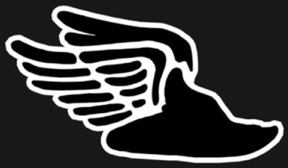Inflammation caused by stress will present with pain and tenderness, swelling, redness, heat associated with loss of joint range. After running, repetitive stress to the lower extremities, specifically the knees, will cause micro-trauma and inflammation. This will cause the post run feeling of soreness as well as difficulty in walking. It is advised to practice preventive measures to stop progression of this inflammation and later cause osteoarthritis. Physical therapists like myself have used basic principles in the prevention and treatment of musculoskeletal injuries. These principles include joint protection, rest, ice, compression and elevation (PRICE).
The use of the PRICE treatment will help prevent post-run muscle soreness, knee/ ankle swelling and pain on movement or activity in the involved joints. Rest and elevation of both legs will help relax tense muscles and promote recovery. Ice treatment is specific for acute treatment in that it is applicable only during the 1st 48 hours after the injury and then replaced with heat therapy thereafter. Joint protection and compression helps in muscle recovery in that it prevents further injury and facilitates repair of damaged muscle, joint or ligament. Joint braces, supports, athletic tapes and sleeves are employed to provide both compression and protection.
Kinesio Taping was developed in Japan around 25 years ago and yet had only recently been practiced.
It employs the use of an elastic tape which can facilitate joint movement and yet protect it at the same time. Unlike your usual athletic tape which prevents joint movement, Kinesio tapes actually provide protection while facilitating controlled movement of the joint. This can promote faster healing and recovery of affected joints. My cousins in the U.S. (almost all of them are therapists like me) practice kinesio taping. They even brag about undergoing workshops or training on how to properly use this modality. I, on the other hand, have reduced the practice of Kinesio taping to self-experimentation.
 I had recently ran a marathon and as part of my recovery I had scheduled an easy run of around 10 kilometers. Because of my eagerness to run, I deliberately increased my speed to almost 10K pace for about 3 kilometers in the middle of my easy run. This caused a slight pain at my left sole and eventually developed into plantar fascitiis. This could have been caused by my abrupt increase in speed, a change from midfoot to forefoot running style or a lack of support from my nike lunarglides. Apart from the usual ice and bandages I decided to experiment on using kinesio tapes I bought at RUNNR shop a few weeks back. I watched videos and read manuals on how to properly apply kinesio tapes in plantar fascitiis and applied them. I did not notice any immediate effect but my recovery was shortened from at least 3 days to only 2 days. After 3 days of using the tapes, I was able to do an easy run of around 7K followed by a 13K LSD run 2 days after. I was convinced. Kinesio tapes work! I noticed that kinesio tapes do allow a certain range of motion unlike conventional static tapes and may be used continuously during activity.
I had recently ran a marathon and as part of my recovery I had scheduled an easy run of around 10 kilometers. Because of my eagerness to run, I deliberately increased my speed to almost 10K pace for about 3 kilometers in the middle of my easy run. This caused a slight pain at my left sole and eventually developed into plantar fascitiis. This could have been caused by my abrupt increase in speed, a change from midfoot to forefoot running style or a lack of support from my nike lunarglides. Apart from the usual ice and bandages I decided to experiment on using kinesio tapes I bought at RUNNR shop a few weeks back. I watched videos and read manuals on how to properly apply kinesio tapes in plantar fascitiis and applied them. I did not notice any immediate effect but my recovery was shortened from at least 3 days to only 2 days. After 3 days of using the tapes, I was able to do an easy run of around 7K followed by a 13K LSD run 2 days after. I was convinced. Kinesio tapes work! I noticed that kinesio tapes do allow a certain range of motion unlike conventional static tapes and may be used continuously during activity.For more details on kinesio taping visit SportMed Info.





















hey cuz! where in cebu can we get this tape? my feet's killing me these days and im really going to see a doc na. just dont know when.
ReplyDeletenice blog by the way...